EP4CE6E22C8N Intel/Altera: Specifications, Features and Applications
1.65mm mm FPGAs Cyclone® IV E Series 144-LQFP Exposed Pad 0.5mm mm 144
The EP4CE6E22C8N is a powerful FPGA from Intel/Altera. It belongs to the Cyclone IV family and solves digital problems. It has 6272 logic cells, 392 logic blocks, and 33.8 kB of RAM. This makes it great for tasks like signal processing and data collection. It also works well for industrial control systems. Its smart design fits easily into your projects. This FPGA helps create reliable and scalable solutions. Whether in automation or embedded systems, it offers flexibility and speed to help you succeed.

Altera Cyclone IV FPGA Quick Start Tutorial | Step-by-Step
Specifications
- TypeParameter
- Factory Lead Time11 Weeks
- Mounting Type
The "Mounting Type" in electronic components refers to the method used to attach or connect a component to a circuit board or other substrate, such as through-hole, surface-mount, or panel mount.
Surface Mount - Package / Case
refers to the protective housing that encases an electronic component, providing mechanical support, electrical connections, and thermal management.
144-LQFP Exposed Pad - Surface Mount
having leads that are designed to be soldered on the side of a circuit board that the body of the component is mounted on.
YES - Number of I/Os91
- Operating Temperature
The operating temperature is the range of ambient temperature within which a power supply, or any other electrical equipment, operate in. This ranges from a minimum operating temperature, to a peak or maximum operating temperature, outside which, the power supply may fail.
0°C~85°C TJ - Packaging
Semiconductor package is a carrier / shell used to contain and cover one or more semiconductor components or integrated circuits. The material of the shell can be metal, plastic, glass or ceramic.
Tray - Series
In electronic components, the "Series" refers to a group of products that share similar characteristics, designs, or functionalities, often produced by the same manufacturer. These components within a series typically have common specifications but may vary in terms of voltage, power, or packaging to meet different application needs. The series name helps identify and differentiate between various product lines within a manufacturer's catalog.
Cyclone® IV E - Published2016
- JESD-609 Code
The "JESD-609 Code" in electronic components refers to a standardized marking code that indicates the lead-free solder composition and finish of electronic components for compliance with environmental regulations.
e3 - Part Status
Parts can have many statuses as they progress through the configuration, analysis, review, and approval stages.
Active - Moisture Sensitivity Level (MSL)
Moisture Sensitivity Level (MSL) is a standardized rating that indicates the susceptibility of electronic components, particularly semiconductors, to moisture-induced damage during storage and the soldering process, defining the allowable exposure time to ambient conditions before they require special handling or baking to prevent failures
3 (168 Hours) - Number of Terminations144
- Terminal Finish
Terminal Finish refers to the surface treatment applied to the terminals or leads of electronic components to enhance their performance and longevity. It can improve solderability, corrosion resistance, and overall reliability of the connection in electronic assemblies. Common finishes include nickel, gold, and tin, each possessing distinct properties suitable for various applications. The choice of terminal finish can significantly impact the durability and effectiveness of electronic devices.
MATTE TIN (472) OVER COPPER - HTS Code
HTS (Harmonized Tariff Schedule) codes are product classification codes between 8-1 digits. The first six digits are an HS code, and the countries of import assign the subsequent digits to provide additional classification. U.S. HTS codes are 1 digits and are administered by the U.S. International Trade Commission.
8542.39.00.01 - Voltage - Supply
Voltage - Supply refers to the range of voltage levels that an electronic component or circuit is designed to operate with. It indicates the minimum and maximum supply voltage that can be applied for the device to function properly. Providing supply voltages outside this range can lead to malfunction, damage, or reduced performance. This parameter is critical for ensuring compatibility between different components in a circuit.
1.15V~1.25V - Terminal Position
In electronic components, the term "Terminal Position" refers to the physical location of the connection points on the component where external electrical connections can be made. These connection points, known as terminals, are typically used to attach wires, leads, or other components to the main body of the electronic component. The terminal position is important for ensuring proper connectivity and functionality of the component within a circuit. It is often specified in technical datasheets or component specifications to help designers and engineers understand how to properly integrate the component into their circuit designs.
QUAD - Terminal Form
Occurring at or forming the end of a series, succession, or the like; closing; concluding.
GULL WING - Peak Reflow Temperature (Cel)
Peak Reflow Temperature (Cel) is a parameter that specifies the maximum temperature at which an electronic component can be exposed during the reflow soldering process. Reflow soldering is a common method used to attach electronic components to a circuit board. The Peak Reflow Temperature is crucial because it ensures that the component is not damaged or degraded during the soldering process. Exceeding the specified Peak Reflow Temperature can lead to issues such as component failure, reduced performance, or even permanent damage to the component. It is important for manufacturers and assemblers to adhere to the recommended Peak Reflow Temperature to ensure the reliability and functionality of the electronic components.
260 - Supply Voltage
Supply voltage refers to the electrical potential difference provided to an electronic component or circuit. It is crucial for the proper operation of devices, as it powers their functions and determines performance characteristics. The supply voltage must be within specified limits to ensure reliability and prevent damage to components. Different electronic devices have specific supply voltage requirements, which can vary widely depending on their design and intended application.
1.2V - Terminal Pitch
The center distance from one pole to the next.
0.5mm - Time@Peak Reflow Temperature-Max (s)
Time@Peak Reflow Temperature-Max (s) refers to the maximum duration that an electronic component can be exposed to the peak reflow temperature during the soldering process, which is crucial for ensuring reliable solder joint formation without damaging the component.
40 - Base Part Number
The "Base Part Number" (BPN) in electronic components serves a similar purpose to the "Base Product Number." It refers to the primary identifier for a component that captures the essential characteristics shared by a group of similar components. The BPN provides a fundamental way to reference a family or series of components without specifying all the variations and specific details.
EP4CE6 - JESD-30 Code
JESD-30 Code refers to a standardized descriptive designation system established by JEDEC for semiconductor-device packages. This system provides a systematic method for generating designators that convey essential information about the package's physical characteristics, such as size and shape, which aids in component identification and selection. By using JESD-30 codes, manufacturers and engineers can ensure consistency and clarity in the specification of semiconductor packages across various applications and industries.
S-PQFP-G144 - Number of Outputs91
- Qualification Status
An indicator of formal certification of qualifications.
Not Qualified - Power Supplies
an electronic circuit that converts the voltage of an alternating current (AC) into a direct current (DC) voltage.?
1.21.2/3.32.5V - Clock Frequency
Clock frequency, also known as clock speed, refers to the rate at which a processor or electronic component can execute instructions. It is measured in hertz (Hz) and represents the number of cycles per second that the component can perform. A higher clock frequency typically indicates a faster processing speed and better performance. However, it is important to note that other factors such as architecture, efficiency, and workload also play a significant role in determining the overall performance of a component. In summary, clock frequency is a crucial parameter that influences the speed and efficiency of electronic components in processing data and executing tasks.
472.5MHz - Number of Inputs91
- Programmable Logic Type
Generally, programmable logic devices can be described as being one of three different types: Simple programmable logic devices (SPLD) Complex programmable logic devices (CPLD) Field programmable logic devices (FPGA).
FIELD PROGRAMMABLE GATE ARRAY - Number of Logic Elements/Cells6272
- Total RAM Bits
Total RAM Bits refers to the total number of memory bits that can be stored in a Random Access Memory (RAM) component. RAM is a type of computer memory that allows data to be accessed in any random order, making it faster than other types of memory like hard drives. The total RAM bits indicate the capacity of the RAM chip to store data temporarily for quick access by the computer's processor. The more total RAM bits a component has, the more data it can store and process at any given time, leading to improved performance and multitasking capabilities.
276480 - Number of LABs/CLBs392
- Number of CLBs392
- Length20mm
- Height Seated (Max)
Height Seated (Max) is a parameter in electronic components that refers to the maximum allowable height of the component when it is properly seated or installed on a circuit board or within an enclosure. This specification is crucial for ensuring proper fit and alignment within the overall system design. Exceeding the maximum seated height can lead to mechanical interference, electrical shorts, or other issues that may impact the performance and reliability of the electronic device. Manufacturers provide this information to help designers and engineers select components that will fit within the designated space and function correctly in the intended application.
1.65mm - Width20mm
- RoHS Status
RoHS means “Restriction of Certain Hazardous Substances” in the “Hazardous Substances Directive” in electrical and electronic equipment.
RoHS Compliant
EP4CE6E22C8N Technical Details
Core Specifications of EP4CE6E22C8N
Logic Elements and Architecture
The EP4CE6E22C8N has 6,000 logic elements for complex designs. These elements help create advanced logic functions in projects. It includes 74 I/O pins to connect with other devices. The design supports precise timing for tricky tasks. Programmable logic makes it useful for many applications.
Embedded Memory and RAM Blocks
The EP4CE6E22C8N has M4K memory blocks for storing data. These blocks help manage large amounts of information easily. This is great for signal processing and real-time analysis. Its memory setup fits well into advanced designs. It also allows scaling for bigger projects.
Power Efficiency and Consumption
The EP4CE6E22C8N uses low-power modes to save energy. It works well for portable and embedded systems. Power-saving features keep performance strong while reducing energy use.
Physical and Electrical Characteristics
Package Type and Dimensions
The EP4CE6E22C8N comes in a PQFP-144-EP package. It measures 20x20 mm, making it compact for tight spaces. The design helps remove heat, keeping the device cool during use.
Operating Voltage and Temperature Range
This FPGA works with voltages of 1.0V and 1.2V. It handles temperatures from -40°C to 125°C. These features make it reliable for tough environments like factories or cars.
Performance Metrics
Clock Speed and Timing
The EP4CE6E22C8N uses Phase-Locked Loops (PLLs) for timing. This ensures accurate synchronization in your designs. It processes data quickly, making it great for real-time tasks like signal work.
I/O Standards and Interfaces
The device supports I/O standards like LVTTL, LVCMOS, SSTL, and HSTL. This lets it work with many systems easily. Its I/O pins allow smooth communication with other devices, adding flexibility.
Key Features of EP4CE6E22C8N
High Logic Density for Complex Designs
Benefits of Compact Logic Elements
The EP4CE6E22C8N has a high logic density. This makes it great for tricky digital designs. Its small logic parts let you create advanced functions. You can do this without using too much space. This helps save resources and build better systems. Whether for signal tasks or controls, its logic handles tough jobs easily.
Scalability for Advanced Applications
The EP4CE6E22C8N is built to grow with your needs. Its design allows you to expand as projects get bigger. This means you won’t need to start over when adding features. It works well for both small and big projects. Its ability to grow makes it a smart and lasting choice.
Low Power Consumption for Energy Efficiency
Optimized for Portable and Embedded Systems
The EP4CE6E22C8N uses energy wisely. It’s perfect for portable and small systems. It adjusts power and speed based on the task. This saves energy but keeps it working well. Developers can enjoy longer battery life and lower costs.
Thermal Management Capabilities
The EP4CE6E22C8N handles heat very well. Its small design helps remove heat quickly. This keeps it stable even during heavy use. It’s reliable in places where heat control matters. By staying cool, it works smoothly for a long time.
Flexible I/O Support for Diverse Systems
Compatibility with Multiple Protocols
The EP4CE6E22C8N works with many I/O standards like LVTTL and LVCMOS. This makes it easy to use in different systems. From gadgets to factory machines, it connects well with other parts.
Ease of Integration in Various Applications
Adding the EP4CE6E22C8N to your project is simple. Its flexible design and small size make connections easy. This saves time and effort during development. It’s useful for many industries, like telecom and cars.
Comparison Table:
The EP4CE6E22C8N is better than other FPGAs in key areas:
Feature EP4CE6E22C8N Competing FPGAs Logic Capacity High Varies Power Consumption Low Higher in many cases Communication Interfaces Multiple supported Limited options Application Versatility Embedded systems, signal processing, control systems More specialized applications
Built-in DSP Blocks for Signal Processing
Better Features for Audio and Video
The EP4CE6E22C8N FPGA has built-in DSP blocks. These blocks help with audio and video tasks. They process signals quickly and accurately. For example, they can remove noise from audio or improve video quality. This makes it perfect for multimedia projects.
These DSP blocks handle hard math tasks like multiplying and adding. They do this faster than older methods. This saves time and uses less energy. You get better results without needing more power.
Here’s a comparison of advanced DSP features:
| Feature | DSP48E2 (UltraScale) | DSP58 (Versal) |
|---|---|---|
| Multiplier | 27x18 | 27x24 |
| Single Precision Floating Point Multiplier | N/A | Yes |
| Complex Multiplication | 3 x DSP48E2 | 2 x DSP58 |
| Logic Operations | Limited | Enhanced |
| Resource Efficiency | Moderate | High |
This table shows how modern DSP blocks, like in the EP4CE6E22C8N, are powerful. They make handling tough audio and video tasks easier.
Uses in Communication Systems
The EP4CE6E22C8N's DSP blocks are great for communication systems. They process signals fast and accurately. For example, they help send and receive wireless signals. They also fix errors, making data transfer more reliable.
In networks, these blocks handle lots of data quickly. They work well for 5G and satellite systems. The EP4CE6E22C8N helps create systems for modern communication needs.
Uses of EP4CE6E22C8N in Different Industries
Automation and Robotics in Factories
Systems for Real-time Control
The EP4CE6E22C8N is important for factory automation. It helps real-time control systems work better. Its smart logic parts process data quickly and accurately. This makes robots work smoothly and boosts productivity.
The EP4CE6E22C8N improves factory robots by:
Giving accurate control for robot movements.
Handling large data instantly.
Making automation faster and more efficient.
Managing Data in Automation
Handling data is a big task in automation. The EP4CE6E22C8N solves this with fast data processing. Its memory blocks store and analyze data easily. This makes it perfect for systems like conveyor belts or assembly lines that need quick actions.
Smart Devices and Consumer Electronics
Supporting Modern Interfaces
The EP4CE6E22C8N works well in smart electronics. Its flexible I/O standards fit devices like smart TVs and gaming consoles. It improves user experience by helping device parts communicate smoothly.
| Technology Trend | Effect on FPGA Use |
|---|---|
| More FPGAs in devices | Improves features and user satisfaction |
| Need for smarter device features | Increases demand for powerful, flexible FPGAs |
| Growth in IoT devices | Boosts FPGA use in smart electronics |
Use in Wearable Gadgets
Wearables like fitness trackers need small, energy-saving solutions. The EP4CE6E22C8N meets these needs. It uses less power and can grow with new designs. This helps create lightweight and useful wearables.
Networking and Telecommunications
Fast Data Movement
The EP4CE6E22C8N is great for telecom systems needing fast data transfer. Its DSP blocks and I/O features handle big data loads. For example:
FPGA systems can transfer up to 132 Mbps with 256-byte frames.
Even with bigger frames, it beats software systems in speed.
This makes it a strong choice for high-speed networks like ten-gigabit systems.
Uses in Network Systems
In network setups, the EP4CE6E22C8N solves tough design problems. It handles complex tasks like data routing and signal processing. This makes it reliable for 5G and satellite systems. It ensures smooth communication between devices in networks.
Automotive Systems and ADAS
Power Efficiency in Electric Vehicles
Electric vehicles (EVs) need parts that save energy and work well. The EP4CE6E22C8N FPGA is great for this. It uses little power and works efficiently, making it perfect for EVs. It helps improve battery life and lets cars drive farther. By handling energy-heavy tasks, it keeps EVs running smoothly without wasting power.
The EP4CE6E22C8N also processes data in real-time. This is important for controlling EV systems like motors and batteries. Its design can grow to match the changing needs of EVs. Its small size and ability to manage heat make it a good fit for cars.
Role in Advanced Driver Assistance Systems
Advanced Driver Assistance Systems (ADAS) need fast and accurate data handling. The EP4CE6E22C8N FPGA is key for these systems. It processes sensor data from LiDAR, radar, and cameras. This helps cars move safely in tricky environments. Its ability to do many tasks at once ensures quick decisions.
This FPGA can run custom programs for ADAS features like lane-keeping, collision alerts, and cruise control. High-performance FPGAs like the EP4CE6E22C8N give the power needed for these tasks. They make cars safer by reacting quickly to road changes.
FPGAs work well for ADAS because they:
Analyze data fast for quick actions.
Add advanced safety features easily.
Allow updates and future improvements.
Cyclone IV Device Datasheet
Overview of Cyclone IV Family
Main Features and Details
The Cyclone IV family balances good performance with energy savings. These devices have advanced tools that make digital design easier. You can find important details in the Cyclone IV Device Datasheet and Handbook. These guides include key specs like logic elements, I/O options, and package types. Here’s a summary:
| Document Title | Description |
|---|---|
| Cyclone IV Device Datasheet | Key specs and technical info for Cyclone IV devices. |
| Cyclone IV Device Handbook | In-depth sections on core, I/O, and system setup. |
| Cyclone IV EP4CE6 FPGA - Product Specs | Details on logic elements, I/O, and advanced features. |
These resources give you the knowledge to make smart design choices with full technical details.
Benefits for Digital Design
Cyclone IV devices are known for their many logic resources and built-in memory. They include tools like SRAM, PLLs, and ADCs, cutting down the need for extra parts. Power management adjusts clock speed and voltage to save energy. With fast processing and reprogrammable features, they handle data quickly and allow updates. Interfaces like UART, SPI, and I2C make connecting to other systems simple. Supported by Quartus II tools, these devices make designing and debugging easier.
| Feature | Description |
|---|---|
| Logic Resource Availability | Many Logic Elements (LEs) for flexible and scalable designs. |
| Integrated Storage | Built-in SRAM, EEPROM, PLLs, and ADCs reduce the need for extra parts. |
| Dynamic Power Management | Changes clock speed and voltage to save energy. |
| High Processing Speeds | Works at high speeds, great for fast data tasks. |
| Reprogrammability | Lets you update designs in the field, saving time and money. |
| Built-in Interfaces | Includes UART, SPI, and I2C for easy connection to other devices. |
How Cyclone IV Devices Solve Design Problems
Combining Speed and Energy Savings
Cyclone IV devices give strong performance while saving energy. They adjust clock speed and voltage based on the task. This keeps them fast but energy-efficient. They work at high speeds, making them great for quick data tasks. Their energy-saving design is perfect for portable and embedded systems.
Useful for Many Applications
Cyclone IV devices fit into many industries and uses. Their reprogrammable design lets you update them easily, cutting downtime. Interfaces like SPI and I2C make connecting to other devices simple. Whether for factory machines, telecom, or electronics, these devices offer the flexibility and power you need.
The EP4CE6E22C8N FPGA is powerful and flexible. It combines high logic capacity, low energy use, and adaptable I/O features. Its DSP blocks and expandable design make it useful for many tasks. It works well in areas like telecom, data centers, cars, healthcare, and factories. For example:
In 5G, it handles signals quickly and accurately.
In data centers, it speeds up AI and data analysis.
In cars, it processes data for driver safety systems.
In healthcare, it supports imaging and portable devices.
In factories, it improves robots and predicts machine issues.
Datasheet PDF
- Datasheets :
- PCN Packaging :
- PCN Design/Specification :
- PCN Assembly/Origin :
1. Why is the EP4CE6E22C8N good for embedded systems?
The EP4CE6E22C8N uses little power and has a small size. It works with many I/O standards and has built-in memory. This makes it great for small devices and portable systems. It keeps working well while saving energy.
2. How does the EP4CE6E22C8N manage heat?
The EP4CE6E22C8N has a PQFP-144-EP package that removes heat well. It stays cool even when working hard for long periods. This makes it dependable for tough jobs or nonstop systems.
3. Can the EP4CE6E22C8N be updated for future needs?
Yes, the EP4CE6E22C8N can be reprogrammed. You can change its logic to match new rules or project needs. This keeps your designs useful and ready for changes.
4. What industries use the EP4CE6E22C8N the most?
Industries like telecom, cars, and factory automation use it often. Its fast data handling, low energy use, and ability to grow make it useful. It also works well in gadgets and robots.
5. Where can I find details about the EP4CE6E22C8N?
Check the Cyclone IV Device Datasheet and Handbook for full specs and tips. These guides help you use the FPGA fully in your projects. Resource: Visit Utmel's official website for more help and details.
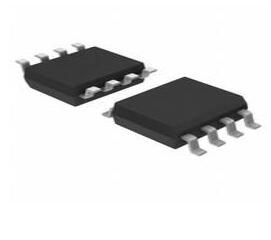 TL062CD OP-AMP: Datasheet, Schematic, Typical Application
TL062CD OP-AMP: Datasheet, Schematic, Typical Application13 September 20211736
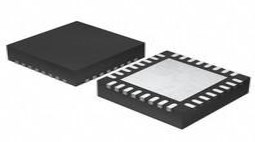 LTC4260 Hot Swap Controller: Pinout, Datasheet and Schematics
LTC4260 Hot Swap Controller: Pinout, Datasheet and Schematics14 September 20211421
![STA8088EXG RF RX GALILEO 1.575GHZ 169TFBGA[FAQ]: Datasheet, Block Diagram, and Features](https://res.utmel.com/Images/Article/3fe63125-18b6-441c-8483-4490b58e8e35.jpg) STA8088EXG RF RX GALILEO 1.575GHZ 169TFBGA[FAQ]: Datasheet, Block Diagram, and Features
STA8088EXG RF RX GALILEO 1.575GHZ 169TFBGA[FAQ]: Datasheet, Block Diagram, and Features14 March 2022601
 Microchip PIC32MX130F064DVPT Technical Datasheet
Microchip PIC32MX130F064DVPT Technical Datasheet29 February 2024100
![LL4148 Small Signal Diode: Diagram, Pinout, and Datasheet [Video&FAQ]](https://res.utmel.com/Images/Article/fa7bbc86-92fc-4a64-80d0-112952feb5f3.png) LL4148 Small Signal Diode: Diagram, Pinout, and Datasheet [Video&FAQ]
LL4148 Small Signal Diode: Diagram, Pinout, and Datasheet [Video&FAQ]23 April 20222866
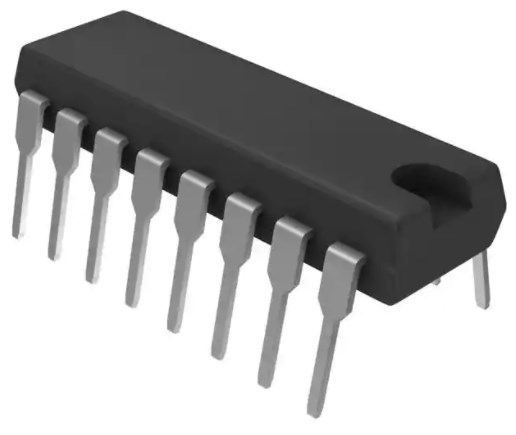 TDA2822 Audio Amplifier: Pinout, Datasheet, and Test Circuits
TDA2822 Audio Amplifier: Pinout, Datasheet, and Test Circuits19 July 202111702
 M4T28-BR12SH1 Battery: M4T28-BR12SH1 Datasheet, Logic Diagram
M4T28-BR12SH1 Battery: M4T28-BR12SH1 Datasheet, Logic Diagram07 March 20222794
 TC4420 MOSFET Driver: Datasheet, Pinout, Application Circuit
TC4420 MOSFET Driver: Datasheet, Pinout, Application Circuit13 December 202111684
 13 kinds of sensors in mobile phones and what are recorded by the sensors
13 kinds of sensors in mobile phones and what are recorded by the sensors26 November 2025106351
 7 Common Functions of MOSFET Gate Circuits
7 Common Functions of MOSFET Gate Circuits22 January 20226625
 How to Simplify Intel FPGA Design with Development Boards
How to Simplify Intel FPGA Design with Development Boards09 June 2025353
 Is Digital Radio Frequency Memory (DRFM) Suitable for Spoofing Interference?
Is Digital Radio Frequency Memory (DRFM) Suitable for Spoofing Interference?12 November 20214562
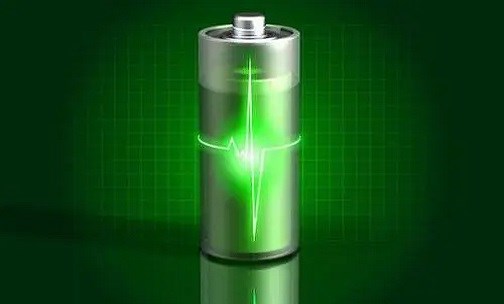 4680 Battery - Upgrade of Battery Technology
4680 Battery - Upgrade of Battery Technology17 December 20215209
 Solenoid Switch: Working Principle, Types and Applications
Solenoid Switch: Working Principle, Types and Applications03 February 202124419
 Will Sodium-ion Battery be the Next Gen of Battery?
Will Sodium-ion Battery be the Next Gen of Battery?29 September 20213893
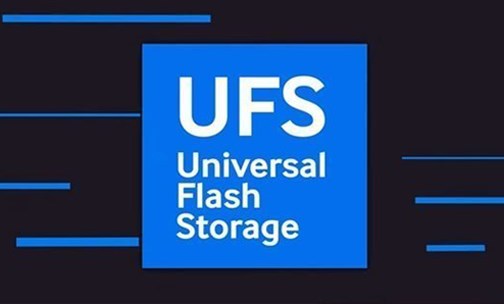 The Era of UFS 4.0, Announced?
The Era of UFS 4.0, Announced?06 May 20224715
Intel
In Stock
United States
China
Canada
Japan
Russia
Germany
United Kingdom
Singapore
Italy
Hong Kong(China)
Taiwan(China)
France
Korea
Mexico
Netherlands
Malaysia
Austria
Spain
Switzerland
Poland
Thailand
Vietnam
India
United Arab Emirates
Afghanistan
Åland Islands
Albania
Algeria
American Samoa
Andorra
Angola
Anguilla
Antigua & Barbuda
Argentina
Armenia
Aruba
Australia
Azerbaijan
Bahamas
Bahrain
Bangladesh
Barbados
Belarus
Belgium
Belize
Benin
Bermuda
Bhutan
Bolivia
Bonaire, Sint Eustatius and Saba
Bosnia & Herzegovina
Botswana
Brazil
British Indian Ocean Territory
British Virgin Islands
Brunei
Bulgaria
Burkina Faso
Burundi
Cabo Verde
Cambodia
Cameroon
Cayman Islands
Central African Republic
Chad
Chile
Christmas Island
Cocos (Keeling) Islands
Colombia
Comoros
Congo
Congo (DRC)
Cook Islands
Costa Rica
Côte d’Ivoire
Croatia
Cuba
Curaçao
Cyprus
Czechia
Denmark
Djibouti
Dominica
Dominican Republic
Ecuador
Egypt
El Salvador
Equatorial Guinea
Eritrea
Estonia
Eswatini
Ethiopia
Falkland Islands
Faroe Islands
Fiji
Finland
French Guiana
French Polynesia
Gabon
Gambia
Georgia
Ghana
Gibraltar
Greece
Greenland
Grenada
Guadeloupe
Guam
Guatemala
Guernsey
Guinea
Guinea-Bissau
Guyana
Haiti
Honduras
Hungary
Iceland
Indonesia
Iran
Iraq
Ireland
Isle of Man
Israel
Jamaica
Jersey
Jordan
Kazakhstan
Kenya
Kiribati
Kosovo
Kuwait
Kyrgyzstan
Laos
Latvia
Lebanon
Lesotho
Liberia
Libya
Liechtenstein
Lithuania
Luxembourg
Macao(China)
Madagascar
Malawi
Maldives
Mali
Malta
Marshall Islands
Martinique
Mauritania
Mauritius
Mayotte
Micronesia
Moldova
Monaco
Mongolia
Montenegro
Montserrat
Morocco
Mozambique
Myanmar
Namibia
Nauru
Nepal
New Caledonia
New Zealand
Nicaragua
Niger
Nigeria
Niue
Norfolk Island
North Korea
North Macedonia
Northern Mariana Islands
Norway
Oman
Pakistan
Palau
Palestinian Authority
Panama
Papua New Guinea
Paraguay
Peru
Philippines
Pitcairn Islands
Portugal
Puerto Rico
Qatar
Réunion
Romania
Rwanda
Samoa
San Marino
São Tomé & Príncipe
Saudi Arabia
Senegal
Serbia
Seychelles
Sierra Leone
Sint Maarten
Slovakia
Slovenia
Solomon Islands
Somalia
South Africa
South Sudan
Sri Lanka
St Helena, Ascension, Tristan da Cunha
St. Barthélemy
St. Kitts & Nevis
St. Lucia
St. Martin
St. Pierre & Miquelon
St. Vincent & Grenadines
Sudan
Suriname
Svalbard & Jan Mayen
Sweden
Syria
Tajikistan
Tanzania
Timor-Leste
Togo
Tokelau
Tonga
Trinidad & Tobago
Tunisia
Turkey
Turkmenistan
Turks & Caicos Islands
Tuvalu
U.S. Outlying Islands
U.S. Virgin Islands
Uganda
Ukraine
Uruguay
Uzbekistan
Vanuatu
Vatican City
Venezuela
Wallis & Futuna
Yemen
Zambia
Zimbabwe















